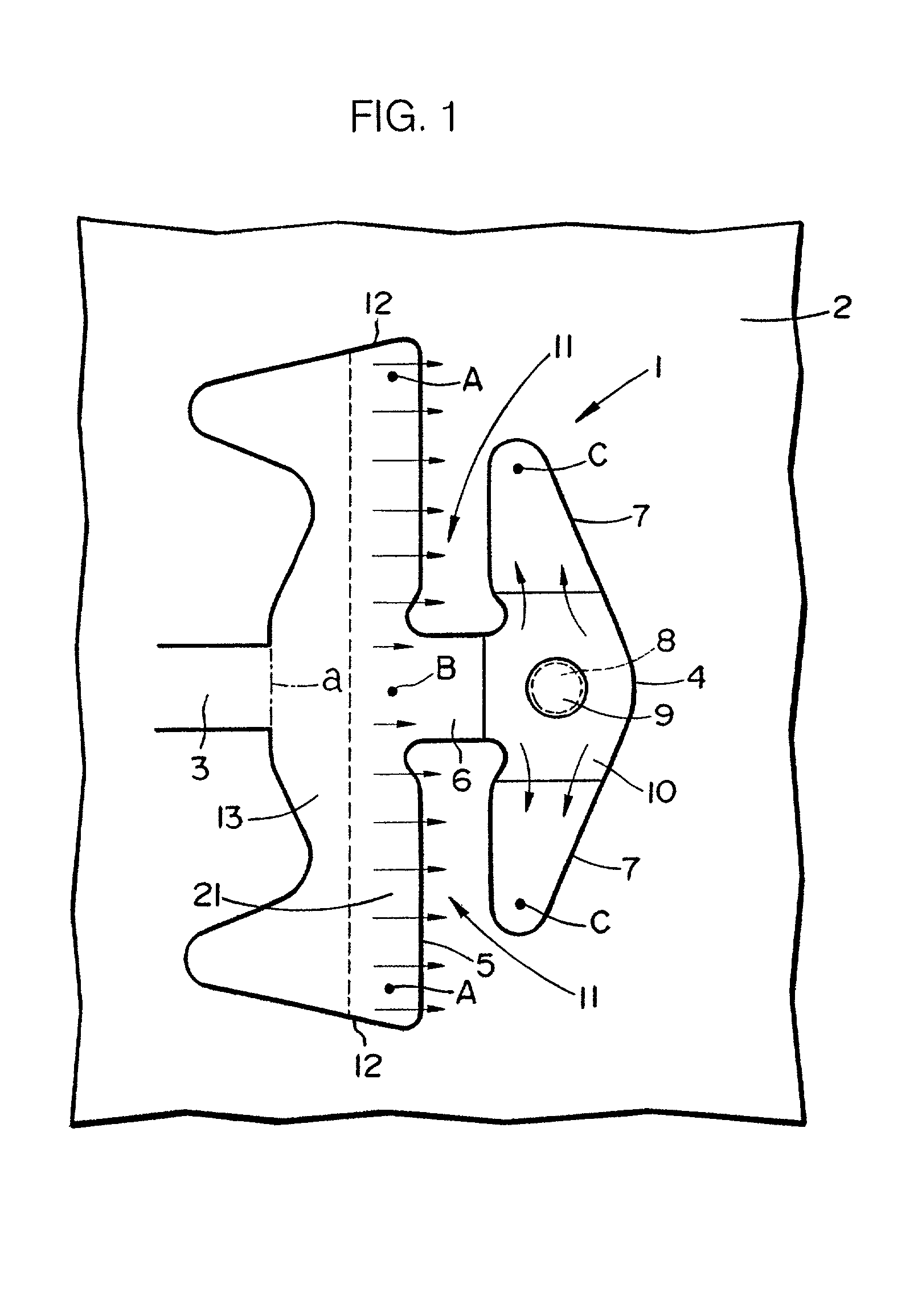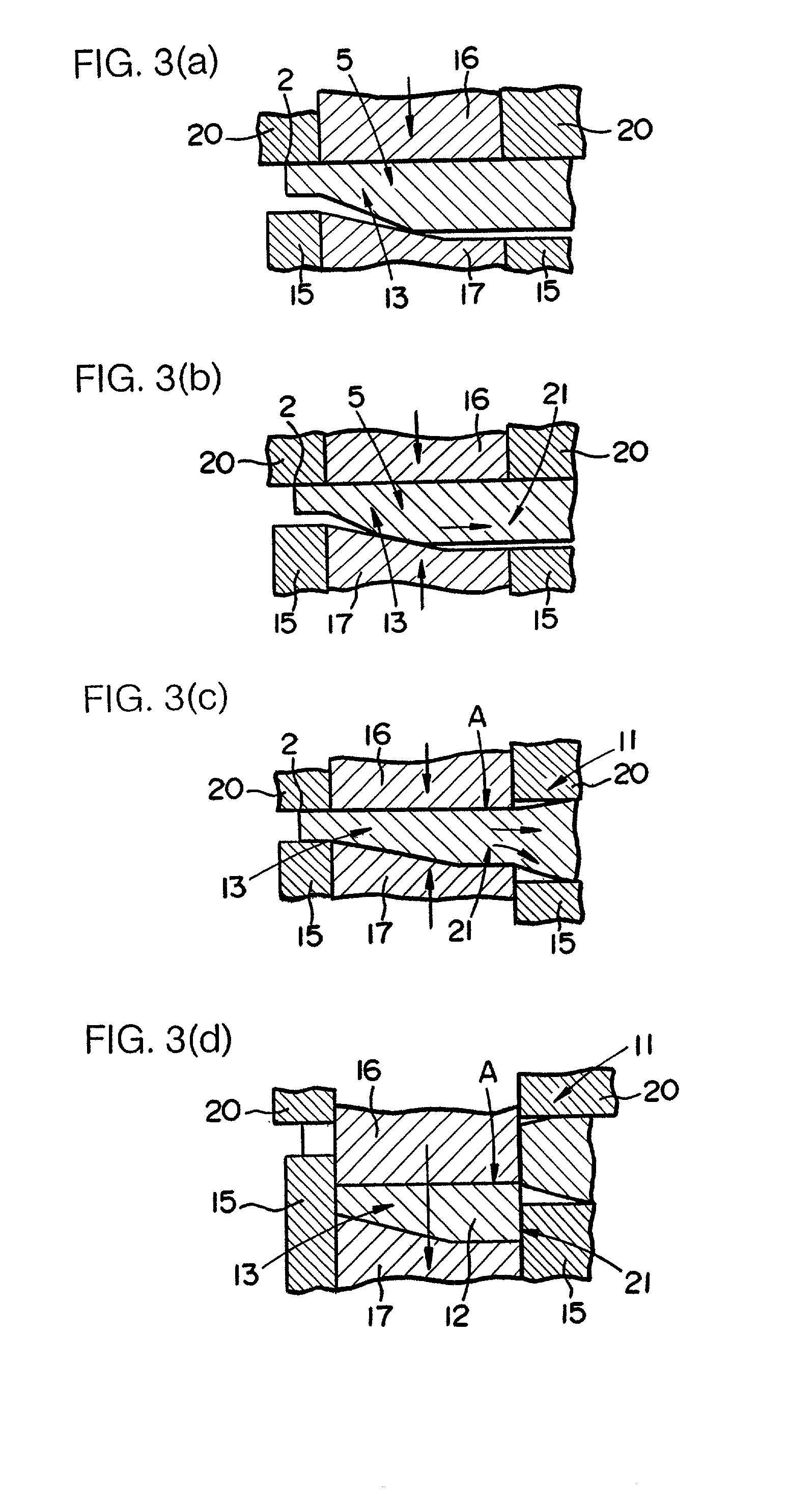Element for belt for continuously variable transmission and method of blanking such element
a technology of continuous variable transmission and element, which is applied in the field of element for belt, can solve the problems of belt which is traveling between the pulleys, affecting the performance of the belt, and increasing the thickness of the upper portion of the body, and is prone to twisted belts
- Summary
- Abstract
- Description
- Claims
- Application Information
AI Technical Summary
Problems solved by technology
Method used
Image
Examples
Embodiment Construction
[0025] A blanking method according to the present invention is used to manufacture an element 1 (see FIGS. 4(a) and 4 (b)) for a belt for use in a continuously variable transmission (not shown) . A plurality of elements 1 are stacked into an annular shape, and bound together by endless rings of metal, thus producing a belt for use in a continuously variable transmission.
[0026] As shown in FIG. 1, the element 1 is blanked out of a metal sheet 2. When the element 1 is blanked, it remains connected to the metal sheet 2 by a joint 3. Thereafter, the joint 3 is cut off from the metal sheet 2 along a boundary between the joint 3 and the element 1 as indicated by the imaginary line a in FIG. 1, thus separating the element 1 from the metal sheet 2.
[0027] The shape of the element 1 thus blanked and separated will briefly be described below with reference to FIGS. 4(a) and 4(b). The element 1 comprises a head 4 which will be positioned on an outer circumferential edge of the belt for use in t...
PUM
 Login to view more
Login to view more Abstract
Description
Claims
Application Information
 Login to view more
Login to view more - R&D Engineer
- R&D Manager
- IP Professional
- Industry Leading Data Capabilities
- Powerful AI technology
- Patent DNA Extraction
Browse by: Latest US Patents, China's latest patents, Technical Efficacy Thesaurus, Application Domain, Technology Topic.
© 2024 PatSnap. All rights reserved.Legal|Privacy policy|Modern Slavery Act Transparency Statement|Sitemap



